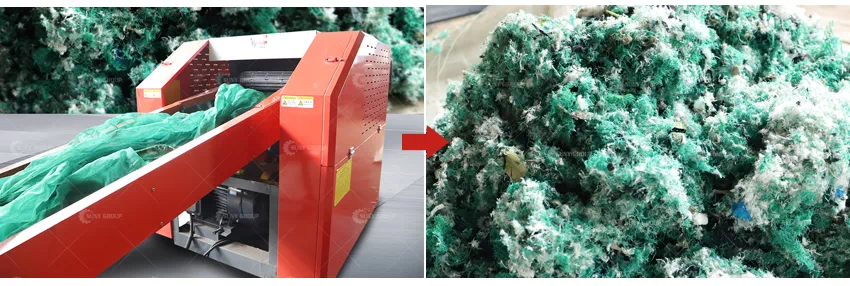Fishing Net Shredder for Recycling
Fishing nets, which are mainly made of materials such as nylon, polyethylene, or polypropylene, are durable and prevent environmental degradation. Recycling discarded fishing nets not only helps to minimize the impact on the environment but also provides an opportunity to recycle valuable raw materials.
A fishing net shredder is a specialized machine designed to shred large, bulky fishing nets into small, manageable pieces. The initial shredding process is vital for efficient recycling, as it prepares the material for further processing (e.g. melting, pelletizing, or reuse in new products).
How it works
Loading the nets: The recycling process begins by feeding the waste nets into the shredder’s hopper. Depending on the size of the nets, some shredders may need to pre-cut the nets into smaller pieces to fit the machine.
Cutting and Shredding: Once the net enters the shredder, rotating blades or knives begin to cut the material into smaller pieces. These blades are designed to handle tough, fibrous materials such as nylon, ensuring that even heavily tangled nets are effectively shredded.
Output: After shredding, fishing nets are cut into smaller pieces or strips that are easier to transport and process. These pieces can then be melted down and converted into pellets for use in the manufacture of a variety of products.
The shredding process ensures that large fishing nets that would otherwise be difficult to transport or recycle become manageable for the next stage of recycling.
Advanced technology for fishing net shredders
Modern fishing net shredders have come a long way with the incorporation of innovative technology. Some of these latest features include
High durability: Cutting blades are often made of high-grade steel to withstand the tough, fibrous nature of fishing nets.
Automation: Many shredders are equipped with automatic feeding systems and sensors that adjust the shredding speed to the load, ensuring smooth and efficient operation.
Energy Efficiency: Newer models of shredders prioritize energy efficiency and reduce the environmental impact of the recycling process itself.
Dust and Fiber Control: Some shredders are designed with filters or systems that minimize the release of fine particles or fibers during the shredding process, helping to maintain a clean and safe working environment.
The fishing net shredder developed by SUNY GROUP will play a vital role in eliminating marine pollution and supporting the circular economy. Through continued investment and collaboration, the recycling of discarded fishing nets can significantly reduce their environmental impact and create new opportunities for resource recovery.




